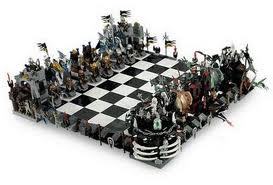Boxing Champions
Boxing, also called pugilism, is a combat sport in which two people fight each other using their fists for competition. Boxing is typically supervised by a referee engaged in during a series of one- to three-minute intervals called rounds, and boxers generally of similar weight. There are four ways to win; if the opponent is knocked out and unable to get up before the referee counts to ten seconds (a knockout, or KO) or if the opponent is deemed too injured to continue (a Technical Knockout, or TKO), if an opponent is disqualified for breaking a rule, or if there is no stoppage of the fight before an agreed number of rounds, a winner is determined either by the referee's decision or by judges' scorecards.
Early history
Minoan youths boxing, Akrotiri (Santorini) fresco. Earliest documented use of 'gloves'.
Fist fighting depicted in Sumerian relief carvings from the 3rd millennium BC, while an ancient Egyptian relief from the 2nd millennium BC depicts both fist-fighters and spectators.[1] Both depictions show bare-fisted contests. In 1927 Dr. E. A. Speiser, an archaeologist, discovered a Mesopotamian stone tablet in Baghdad, Iraq depicting two men getting ready for a prize fight. The tablet is believed to be 7,000 years old. The earliest evidence for fist fighting with any kind of gloves can be found on Minoan Crete (c. 1500–900 BC), and on Sardinia, if we consider the boxing statues of Prama mountains (c. 2000–1000 BC).
Boxing, also called pugilism, is a combat sport in which two people fight each other using their fists for competition. Boxing is typically supervised by a referee engaged in during a series of one- to three-minute intervals called rounds, and boxers generally of similar weight. There are four ways to win; if the opponent is knocked out and unable to get up before the referee counts to ten seconds (a knockout, or KO) or if the opponent is deemed too injured to continue (a Technical Knockout, or TKO), if an opponent is disqualified for breaking a rule, or if there is no stoppage of the fight before an agreed number of rounds, a winner is determined either by the referee's decision or by judges' scorecards.
Early history
Minoan youths boxing, Akrotiri (Santorini) fresco. Earliest documented use of 'gloves'.
Fist fighting depicted in Sumerian relief carvings from the 3rd millennium BC, while an ancient Egyptian relief from the 2nd millennium BC depicts both fist-fighters and spectators.[1] Both depictions show bare-fisted contests. In 1927 Dr. E. A. Speiser, an archaeologist, discovered a Mesopotamian stone tablet in Baghdad, Iraq depicting two men getting ready for a prize fight. The tablet is believed to be 7,000 years old. The earliest evidence for fist fighting with any kind of gloves can be found on Minoan Crete (c. 1500–900 BC), and on Sardinia, if we consider the boxing statues of Prama mountains (c. 2000–1000 BC).








 Baseball is a game of skill that is played with a hard ball and a bat between two teams of nine players each at a time on the playing field at once. Although many different people play Baseball all over the world it is most popular in the United States. It is so popular in fact, it is referred to as the national pastime of the United States because of the tradition and popularity associated with the game. Baseball consists of many complicated rules. It also has a very elaborate history. One can not fully understand the game America has grown to love until learning about not only the rules but also the history.
Baseball is a game of skill that is played with a hard ball and a bat between two teams of nine players each at a time on the playing field at once. Although many different people play Baseball all over the world it is most popular in the United States. It is so popular in fact, it is referred to as the national pastime of the United States because of the tradition and popularity associated with the game. Baseball consists of many complicated rules. It also has a very elaborate history. One can not fully understand the game America has grown to love until learning about not only the rules but also the history.